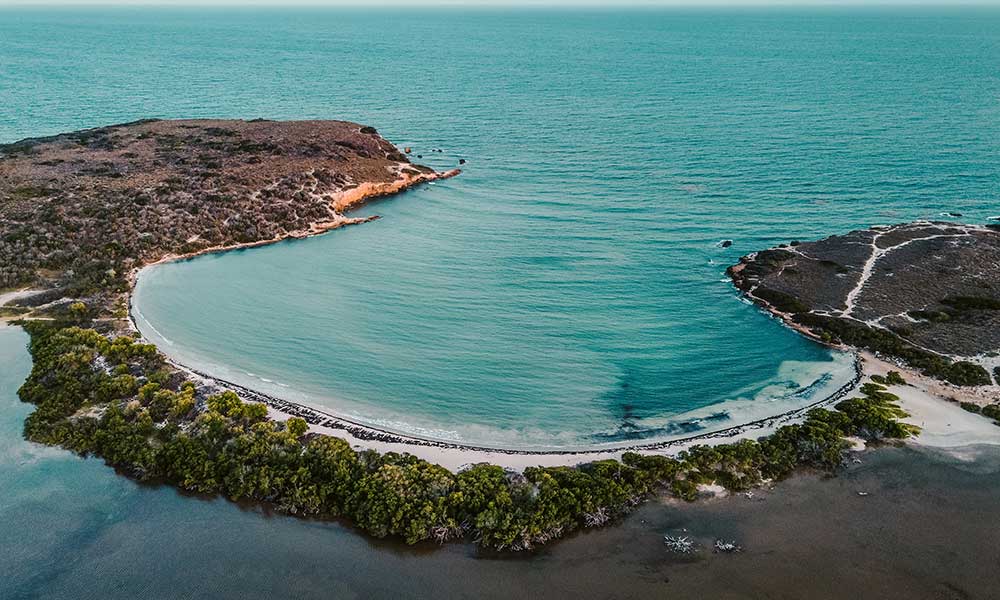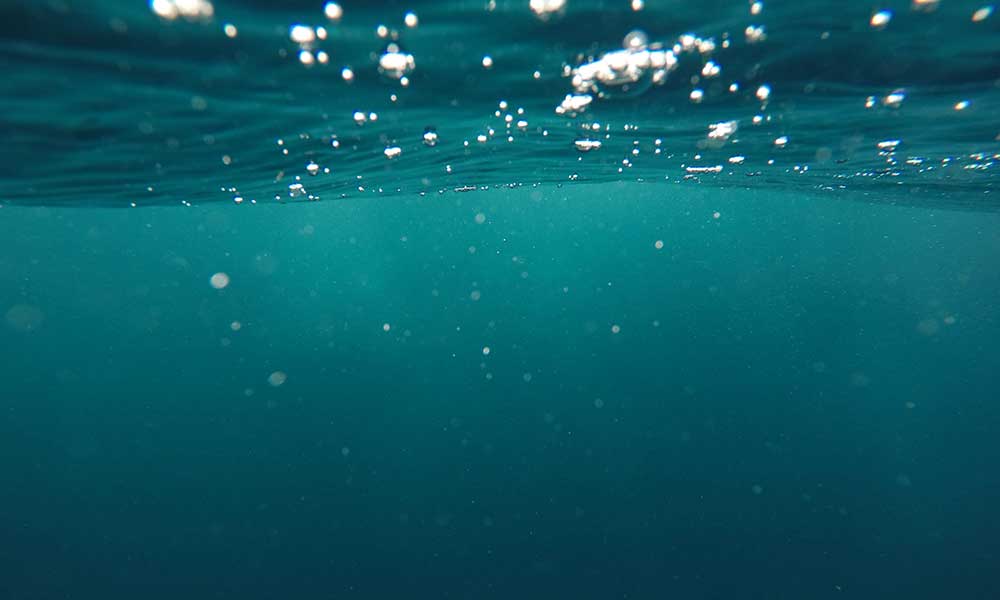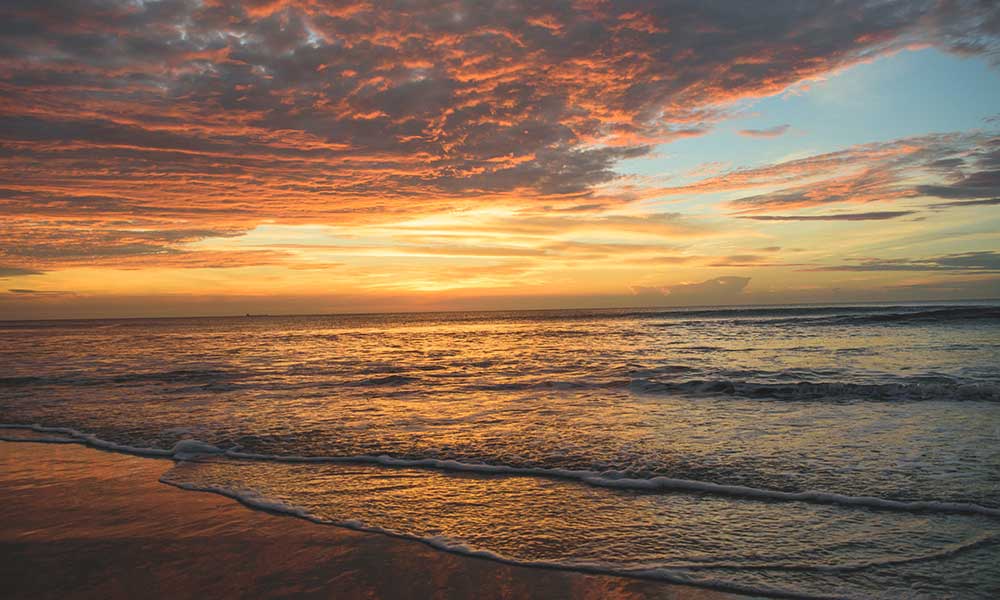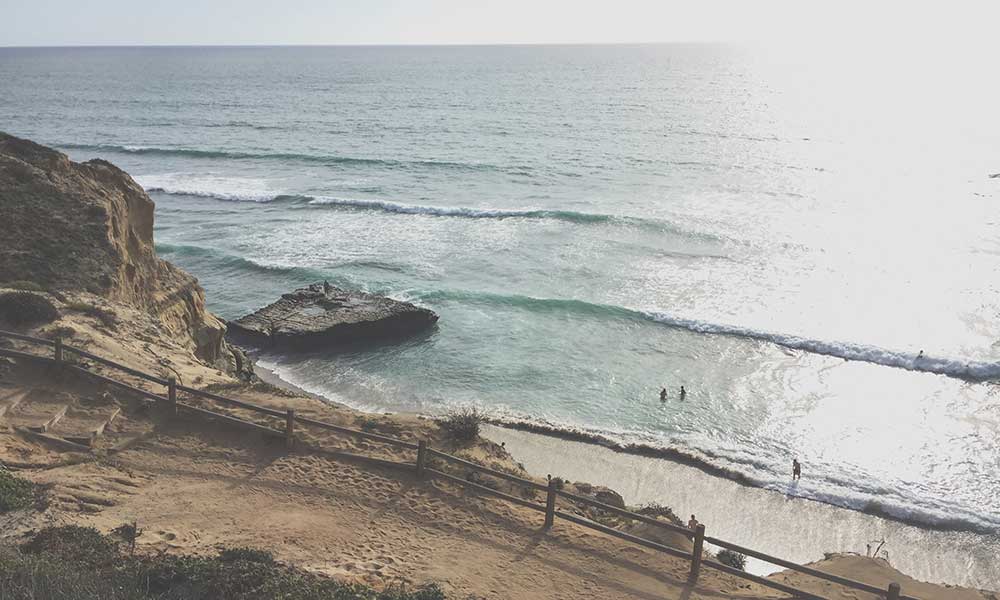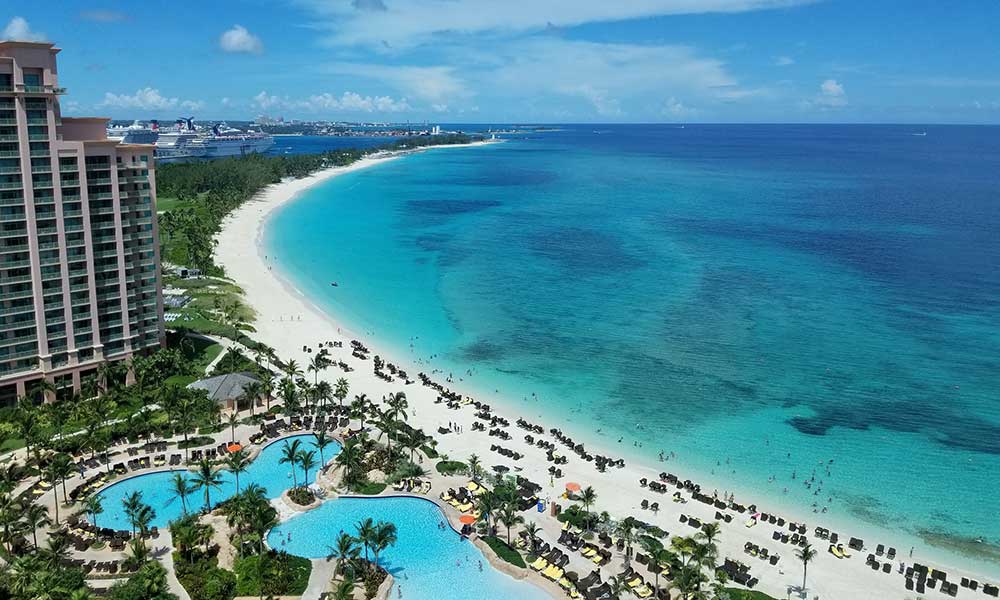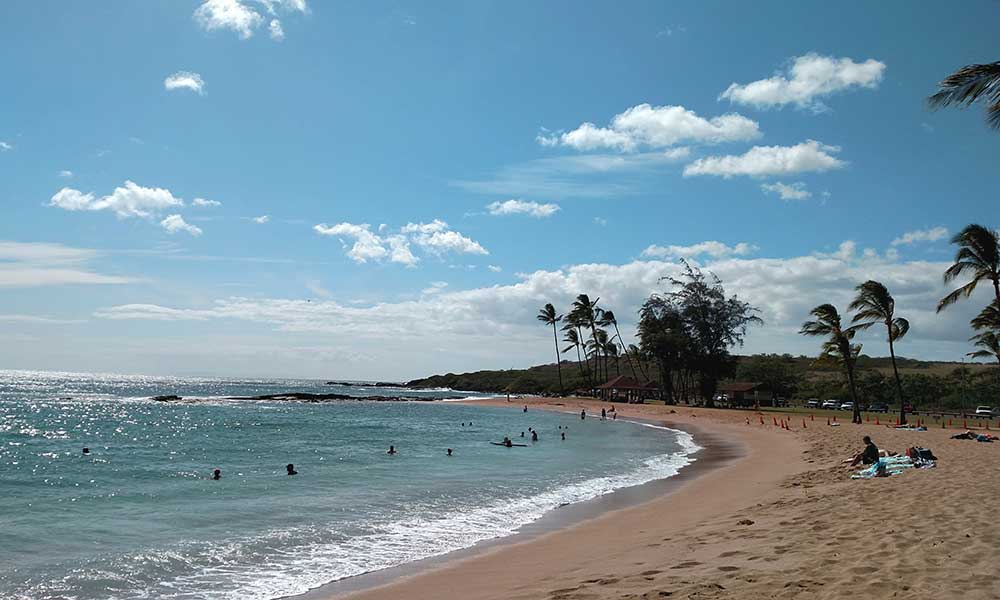Puerto Rico is an island surprise of color and a traveler’s dream destination. So, it is no wonder that numerous snorkeling enthusiasts flock to Puerto Rico to explore the wonderous oceans surrounding the island. If you are looking for a new snorkeling adventure to discover, then Puerto Rico must be at the top of places to visit.
The Isle of Puerto Rico comprises an expansive cluster of 143 islands, of which only Vieques, Culebra, and Puerto Rico are inhabited. If you are looking for idyllic beaches to snorkel, you might consider trying out Vieques, Fajardo, La Parguera, Rincón, San Juan, and Culebra.
If this is your first snorkeling experience in Puerto Rico, I have you covered with everything you need to know about island hopping and where to find some of the best places to snorkel.
Snorkeling In Puerto Rico
Puerto Rico is home to around seven hundred species of fish, sharks, turtles, and you can sometimes spot whales swimming in the warm Caribbean waters surrounding the island. The coastline extends to over 300 miles and is teaming with all kinds of colorful sea life.
With so many marine protected areas, islets, cays, and vibrant ocean life to explore, you will not be disappointed when snorkeling in Puerto Rico. Puerto Rico is your ultimate snorkeling vacation!
You will get to swim with the leatherback and green turtles and sometimes swim with the dolphins and delight at the healthy coral reefs inhabited with queen angelfish, stoplight parrotfish, and even spot a stingray or two. There is no shortage of areas to explore in Puerto Rico.
When you are out in the ocean, you should never forget that the corals are living creatures, which perish if you touch them. So, be mindful of this, and preserve our rich underwater heritage.
Puerto Rico is abundant with healthy coral reefs. You can find seven different species of endangered corals at the Tres Palmas Marine Reserve, including boulder star coral, staghorn coral, and elkhorn coral.
Some islets in Puerto Rico are uninhabited wildlife refuges, and visitors are advised not to wander around the islands. It is advisable to book a snorkeling tour with a certified tour company so that you are guaranteed a safe trip and easier access to the coral reefs and the underwater sea life.
You can take your snorkeling gear or rent your gear from various snorkeling gear companies or chartered tour groups.
Whether you are a novice or an experienced snorkeler, the guided snorkeling tours in Puerto Rico are safe, so you can rest assured that you can safely spend your day enjoying the vibrant underwater sea life on the island.
Snorkeling In Rincón, Puerto Rico
On the west coast of Puerto Rico lies the surfer town of Rincón. Snorkeling spots are accessible only a few steps off the Tres Palmas Marine Reserve beach.
Guided snorkeling tours can be booked via Rincón Snorkeling Adventures, which sets out from shore. Diving excursions can be done via Taino Divers to the island of Desecheo, where you can spot sharks, humpback whales, and even dolphins.
Snorkeling In San Juan, Puerto Rico
One of the most favored snorkeling sites in San Juan is Escambrón beach right opposite the Caribe Hilton Hotel. Escambrón beach has many coral reef formations that protect it from the heavy surf from the Atlantic Ocean.
Since scuba divers and snorkelers frequent the beach, the tropical fish living beneath the sea are familiar with people, so they come close to you.
Snorkeling and scuba diving gear rental facilities are available on the beach, so if you do not carry your snorkeling gear with you, you can always rent gear for the day. Aqua Adventures provides snorkeling tours of San Juan with gear rentals. Scuba Dog also offers snorkeling and scuba diving gear rentals and guided snorkeling tours of the island.
Snorkeling In Culebra, Puerto Rico
The island of Culebra is a snorkeler’s paradise if you are looking to explore healthy coral formations and active sea life. This tiny island of only 11 square miles has a vast shoreline with some of the best snorkeling that you could find in Puerto Rico.
Some of the best snorkeling spots are easy to access directly from the beach. The visibility usually depends on the sea and weather conditions, but generally, the island has excellent underwater viewing.
The tiny island of Culebra is only seventeen miles east of the mainland of Puerto Rico but has a far better feel and vibe than Puerto Rico.
Culebra has not been exposed to the urban developments that Puerto Rico has undergone, which makes this a pristine spot for a great island experience. The island of Culebra is a natural coral island without any of the muddy rivers to spoil the crystal-clear water.
It also has very few inhabitants with large wildlife refuges, allowing the coral reefs around the island to thrive. If you are searching for a soft sandy spot to sit on the beach, you might have to look elsewhere since these beaches are slightly rocky and not suited for sitting.
The beaches and coves west facing have the best snorkeling since large landmasses prevent most waves from the north to northeast. The underwater experience is packed with stingrays, turtles, tons of fish, and all sorts of corals.
It can sometimes feel like you are snorkeling in an aquarium! You should watch your step and be aware of not touching any of the underwater sea life as you will find various sea urchins and fire coral.
If you are looking for white sandy beaches, then Flamenco Beach is most famous for that. Flamenco Beach was once ranked as one of the best beaches in Culebra by the Discovery Channel.
It has excellent snorkeling that is only a short swim from the beach, and this area is also called “Shark Cages” or “Muellecito” by locals. You will have to enter and exit this beach between two rows of rocks/concrete since the reef comes up to the beach. This stunning reef is covered with all types of coral and sea life.
Top Snorkeling Spots In Culebra
The tiny island of Culebra is a treasure trove of healthy sea life of all kinds. So, if you are looking to snorkel with sea turtles, stingrays, and other sea creatures, then Culebra is probably one of the best spots in Puerto Rico that you can visit.
Tamarindo Beach, which forms part of Luis Pena Channel Nature Reserve, is where you can find some active sea life. The main attraction at Tamarindo Beach is the stingrays and sea turtles. The University of Puerto Rico is “planting” some coral along this beach to rebuild this reef once again.
The sea turtles love swimming among the seagrass, so you can marvel at these beautiful creatures swimming in their natural habitat.
Along the road from Tamarindo Beach are Tamarindo Estates, where you can find some lovely reefs, but there is no open access for non-guests. This beach is mainly rocky, so you will have to wear shoes and be prepared to do a bit of rock-walking to reach some of the better snorkeling spots.
Carlos Rosario Beach has some of the best snorkeling spots in Culebra. The best spots for snorkeling at Carlos Rosario are 15 to 25 feet of water. In these spots, you will come across the most extensive diversity of coral and fish that you can find on the island.
Tamarindo Beach and Carlos Rosario Beach provide ample sun and shade, with small, gentle currents with bountiful marine life. You can be prepared to see bluetail fish, angelfish, remoras, octopus, cuttlefish with the occasional shark. Carlos Rosario Beach is a little twenty-minute walk over the hill from the Flamenco parking lot.
Melones Beach, also part of the Luis Pena Channel Nature Reserve, is relatively easy to access. You drive right up to the beach, find a spot to park your car, and the beach is just a short distance away from there.
The underwater rock formations here are pretty unique. The water depth here is between 10 to 15 feet, but you will see many fans and soft coral, along with a few types of hard coral.
Top Snorkeling Spots In Vieques, Puerto Rico
The island of Vieques or Isla de Vieques, commonly known amongst the locals, is home to some fantastic white sand beaches, crystal blue waters and some of the best snorkeling owing to a healthy and thriving coral reef.
Isla de Vieques stretches for just 21 miles and is the home of Sun Bay Beach. The beach is possibly one of the island’s most widely known beaches on Vieques, with a 5-mile-wide stretch of sand. Sun Bay Beach is easily accessible with ample parking, public toilets, and showers.
Sea Glass Beach, or Playa Cofi as it is known among the locals, offers a truly unique snorkeling experience for its visitors.
The snorkeling areas are directly accessible from shore, and you will be amazed by the picturesque views that surround you when you set foot onto this beach.
Snorkelers wanting to explore the vibrant sea life will be surprised to see an ancient shipwreck lying off the coast; that will be any snorkeler’s dream snorkeling experience!
Mosquito Pier, is one of the most recommended snorkeling spots on the island of Vieques. This spot was once a long Naval Pier that is now used for scuba diving and snorkeling. The old naval pier is now a protected area where marine life has made its home.
Mosquito Pier can be accessed from shore, and it is at this site you are guaranteed to be swimming among sea turtles. You shouldn’t expect huge coral reefs, but instead be happy with both hard and soft coral colonies, such as elkhorn.
Playa La Chiva, which was once known as Blue Beach, is a unique beach that will take any visitors’ breath away.
The beach has contrasting shades of blue ocean water that are fascinating and pleasing to the eye. Due to its sizeable sandy stretch, you do not get the overcrowded feeling like some other beaches.
Beneath the water’s surface, you will discover a remarkable collection of coral and a vast display of sea life which is attractive to any underwater explorer.
A reef is close to shore that provides some decent marine life to explore. Still, more experienced snorkelers can explore Isla de Chiva cay, about fifteen minutes swim from the beach, which has a superior snorkeling experience.
Punta Arenas (Green Beach), for nature lovers, is a rare gem! It does not have the soft powdery sand as Blue Beach or Red Beach, but the atmosphere here is peaceful and private, and you will be left alone to enjoy the sun and blue seas.
To get to Green Beach, you have to drive down a bumpy stretch of road until you get to the parking area. You can park your car and hike directly to the shallow water snorkeling spots there.
The crystal-clear sea is a hive of colorful tropical fish species such as parrotfish, angelfish, shrimp, lobster, trumpetfish, and stingrays. Sea Turtles will also swim past you, and you can capture pictures of them feeding on seagrass if you have your camera with you.
Top Snorkeling Spots In Fajardo, Puerto Rico
Seven Seas Beach, on the tiny island of Fajardo, is a snorkeler’s wonderland. The waters are warm, shallow and the surrounding reefs have some colorful tropical fish. Fajardo lies on the east coast of Puerto Rico and is not very crowded so that you can enjoy the freedom of having the beach to yourself.
For most visitors of Fajardo, the beach feels like a local hangout rather than a tourist destination, making the beach a very low-key snorkeling beach.
You can carry your snorkeling gear if you want to snorkel at Seven Seas Beach, or you can hire snorkeling gear from the many shops situated on the beach. Public parking is available, and it only costs $5 to park your car.
If you think of going out to Playa Escondida, a short walk from Seven Seas, for some swimming and snorkeling, you might reconsider your decision. The government has placed “No Swimming” signage at the beach to prevent visitors from going into the waters here.
The beach has strong rip currents and hazardous surf that is unsuitable for swimming or snorkeling. You should not even consider going in if the waters look calm, as that might be poor judgment. The beach is secluded enough for you to relax, but it isn’t recommended to get into the water.
Snorkeling In La Parguera, Puerto Rico
La Parguera is situated on the southwest coast of Puerto Rico. This beautiful beach comprises many coral reefs, small cays, and mangrove islands.
The waters of La Parguera are home to a variety of marine life like dolphins, sea turtles, and barracudas. La Parguera is also famous for its bioluminescent bays, and this is one of the three bioluminescent bays of Puerto Rico. You might want to put La Parguera at the top of your list to see the bioluminescent plankton!
Some of the prime snorkeling spots on the Marine Reserve are off the coast and are only accessible by boat or kayak. One of the perfect ways to discover La Parguera is with a recognized tour operator.
There are no snorkeling rental facilities available on La Parguera, so if you want to snorkel here, you will need to carry your own gear.
Snorkeling Gear For Your Puerto Rico Trip
No snorkeling adventure is complete without the correct snorkeling gear. If you are a new snorkeling adventurer looking to explore the coral reefs of Puerto Rico, then you should take along your snorkeling gear when you go on holiday.
Here are a few items that you can take with you for your snorkeling adventure to Puerto Rico
Conclusion
The sea life around Puerto Rico is the home ground to a biodiverse ecosystem and marine life. As you come across all these fantastic underwater species, you will realize why it is essential to conserve their natural habitat and help them survive for many future generations.
Snorkeling is an excellent way to enjoy the vibrant marine life of Puerto Rico since it is eco-friendly and it does not disrupt their natural habitat.

